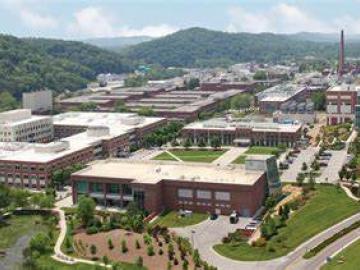Filter News
Area of Research
- Advanced Manufacturing (22)
- Biology and Environment (24)
- Building Technologies (1)
- Clean Energy (112)
- Computer Science (4)
- Electricity and Smart Grid (1)
- Fuel Cycle Science and Technology (1)
- Functional Materials for Energy (1)
- Fusion and Fission (33)
- Fusion Energy (10)
- Isotope Development and Production (1)
- Isotopes (26)
- Materials (134)
- Materials Characterization (1)
- Materials for Computing (19)
- Materials Under Extremes (1)
- National Security (26)
- Neutron Science (39)
- Nuclear Science and Technology (38)
- Nuclear Systems Modeling, Simulation and Validation (1)
- Quantum information Science (9)
- Supercomputing (56)
- Transportation Systems (1)
News Topics
- (-) 3-D Printing/Advanced Manufacturing (115)
- (-) Cybersecurity (35)
- (-) Isotopes (46)
- (-) Materials Science (130)
- (-) Microscopy (50)
- (-) Nuclear Energy (100)
- (-) Polymers (31)
- (-) Quantum Science (64)
- (-) Space Exploration (24)
- Advanced Reactors (32)
- Artificial Intelligence (81)
- Big Data (48)
- Bioenergy (86)
- Biology (93)
- Biomedical (56)
- Biotechnology (20)
- Buildings (52)
- Chemical Sciences (55)
- Clean Water (28)
- Climate Change (90)
- Composites (25)
- Computer Science (179)
- Coronavirus (46)
- Critical Materials (23)
- Decarbonization (68)
- Education (3)
- Element Discovery (1)
- Emergency (2)
- Energy Storage (106)
- Environment (187)
- Exascale Computing (33)
- Fossil Energy (4)
- Frontier (37)
- Fusion (51)
- Grid (59)
- High-Performance Computing (78)
- Hydropower (11)
- Irradiation (3)
- ITER (7)
- Machine Learning (42)
- Materials (137)
- Mathematics (6)
- Mercury (12)
- Microelectronics (2)
- Molten Salt (8)
- Nanotechnology (60)
- National Security (54)
- Net Zero (10)
- Neutron Science (127)
- Partnerships (37)
- Physics (58)
- Quantum Computing (28)
- Renewable Energy (2)
- Security (23)
- Simulation (40)
- Software (1)
- Statistics (2)
- Summit (56)
- Sustainable Energy (115)
- Transformational Challenge Reactor (7)
- Transportation (91)
Media Contacts

Scientists at ORNL have developed a method that demonstrates how fiber-reinforced polymer composite materials used in the automotive, aerospace and renewable energy industries can be made stronger and tougher to better withstand mechanical or structural stresses over time.

Researchers simulated a key quantum state at one of the largest scales reported, with support from the Quantum Computing User Program, or QCUP, at ORNL.

Rishi Pillai and his research team from ORNL will receive a Best Paper award from the American Society of Mechanical Engineers International Gas Turbine Institute in June at the Turbo Expo 2024 in London.

Rigoberto “Gobet” Advincula, a scientist with joint appointments at ORNL and the University of Tennessee, has been named a Fellow of the American Institute for Medical and Biological Engineering.

The Society of Manufacturing Engineers has honored three Oak Ridge National Laboratory researchers with the 2024 SME Susan Smyth Outstanding Young Manufacturing Engineer Award.

ORNL’s Erin Webb is co-leading a new Circular Bioeconomy Systems Convergent Research Initiative focused on advancing production and use of renewable carbon from Tennessee to meet societal needs.

ORNL scientists have spent the past 20 years studying quantum photonic entanglement. Their partnership with colleagues at Los Alamos National Laboratory and private industry partner Qubitekk led to development of the nation’s first industry-led commercial quantum network. This type of network could ultimately help secure the nation’s power grid and other infrastructure from cyberattacks.

ORNL was front and center recently at one of the world’s largest optical networking conferences, the 2024 Optic Fiber Communication Conference and Exhibition, or OFC. ORNL researchers had major roles at the OFC 2024, a three-day event held in San Diego, California from March 26-28 which featured thousands of the world’s leading optical communications and networking professionals.

Scientists at ORNL have developed 3D-printed collimator techniques that can be used to custom design collimators that better filter out noise during different types of neutron scattering experiments
ORNL scientists have determined how to avoid costly and potentially irreparable damage to large metallic parts fabricated through additive manufacturing, also known as 3D printing, that is caused by residual stress in the material.




